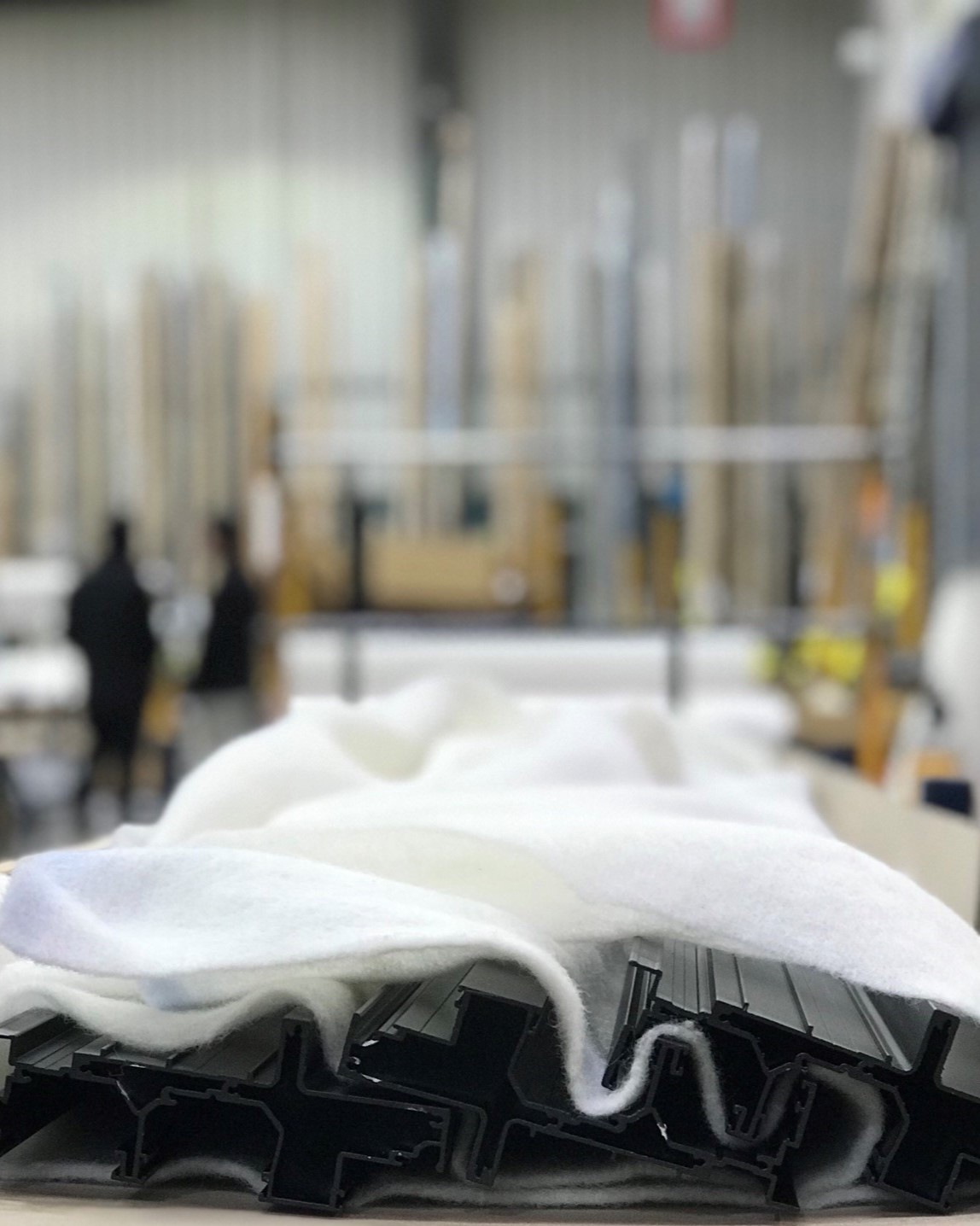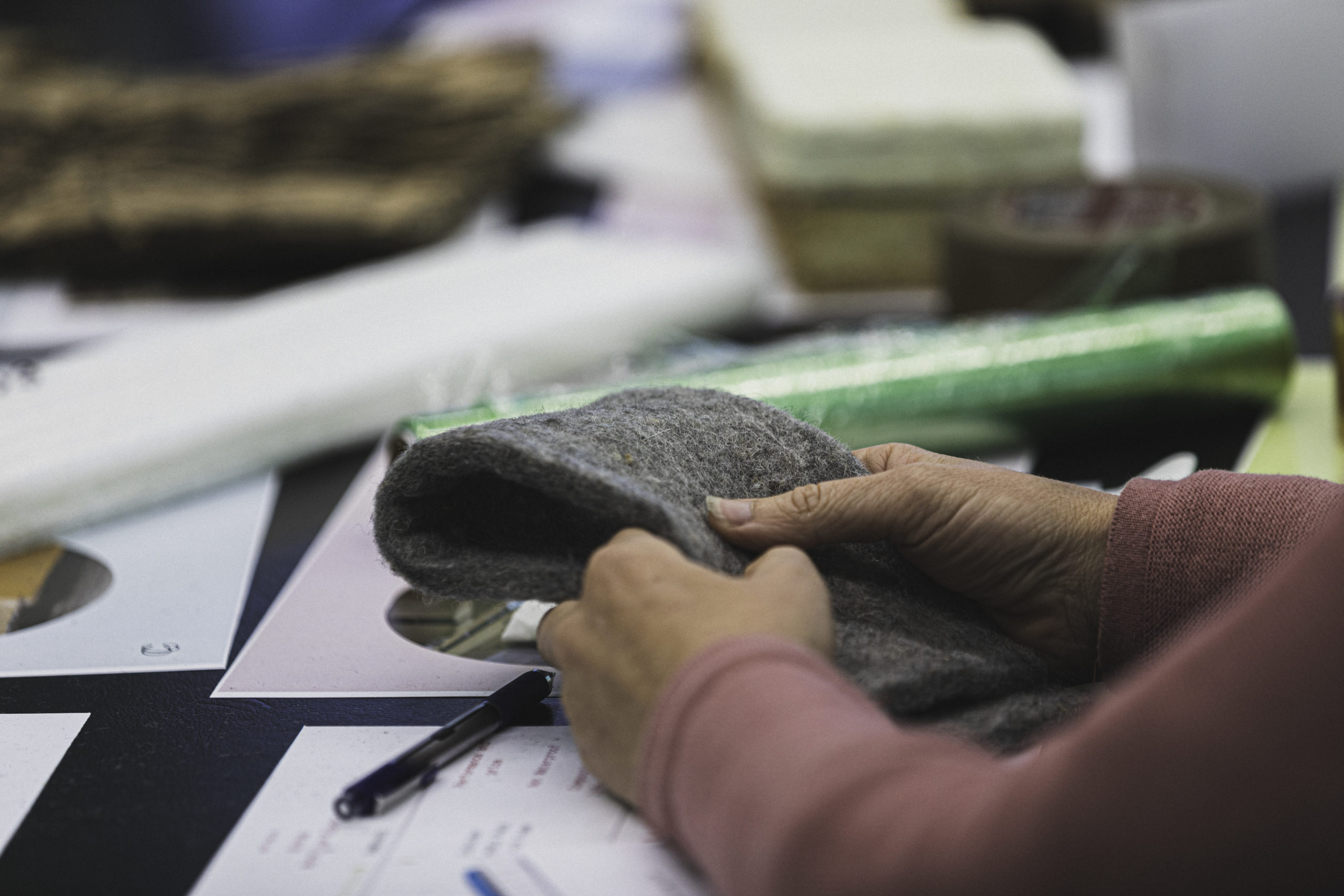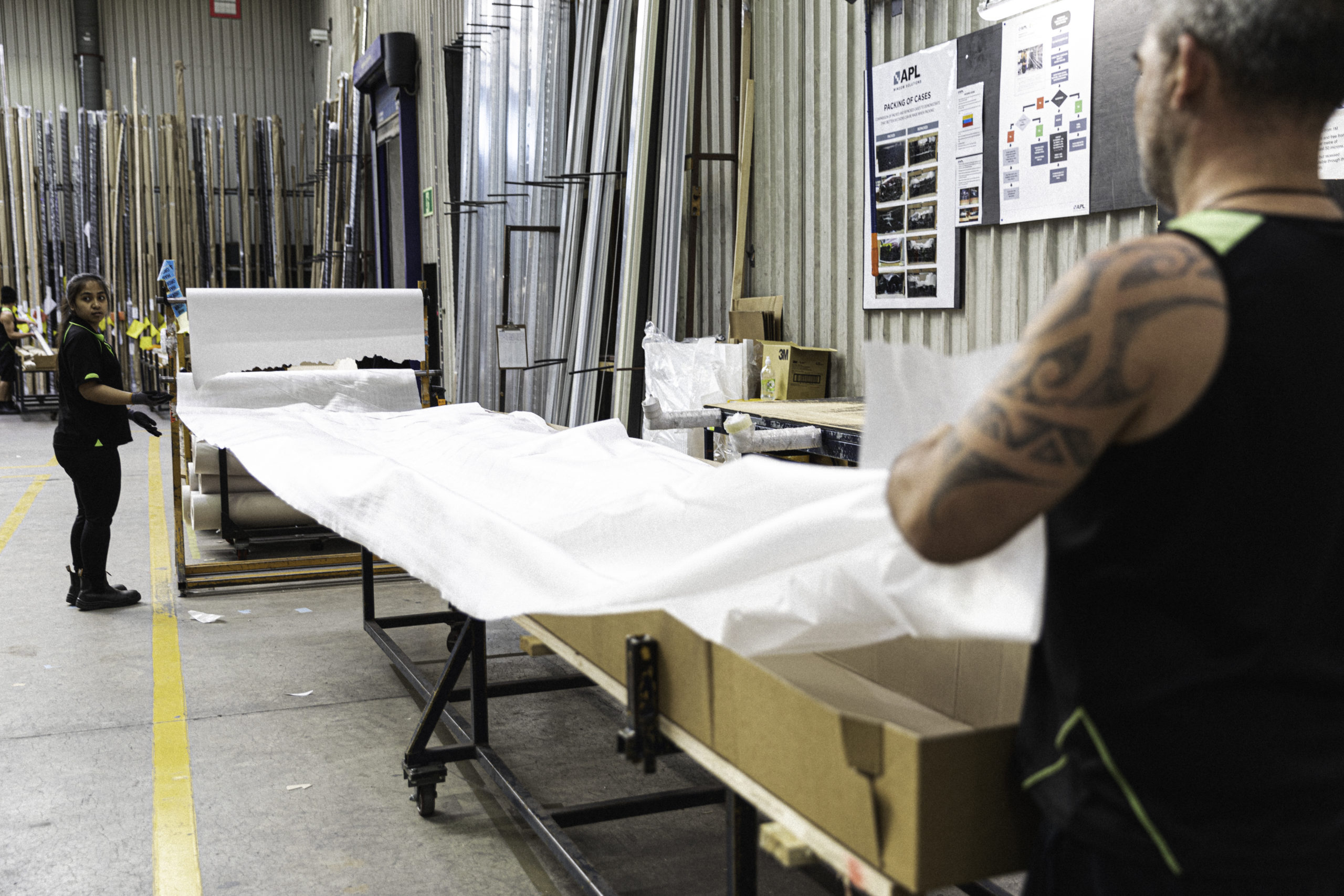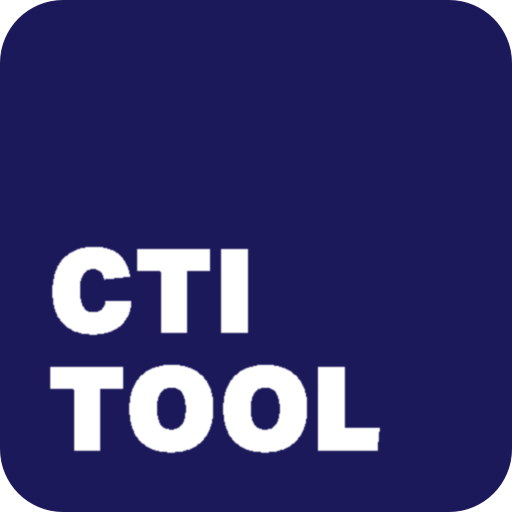CASE STUDY
Profile Group in New Zealand is improving the circularity of their packaging from 64% to 90% using CTI Tool
The leading manufacturer of aluminium windows and doors in New Zealand uses the CTI Tool to set the baseline of their circularity, measure which actions will have the most effect on their performance, and inform an action plan to achieve close to 100% circularity of packaging materials by 2025.

The Circular Transitions Indicators (CTI) framework was developed by WBCSD and 30 of its members. CTI helps companies measure and improve their sustainability performance by providing a simple and sector-agnostic way to measure circularity and giving insights into how to reduce primary resource use and waste generation.


Meet Profile Group and Circularity
Profile Group, a family-run business out of New Zealand, grew over the last 50 years to become the largest supplier of aluminum windows and doors for the New Zealand building industry. The group, employing 980 people across 10 businesses, APL Window Solutions being the most recognized company, is leveraging its 50% market share to integrate the whole supply chain of aluminum windows and doors end-to-end.
The company has evolved a lot recently with Mikayla Plaw leading sustainability, with the mission to always improve today for the future of the environments we live in — across Profile Group’s family of businesses. Mikayla, Executive Director and GM of Organizational Development and Sustainability, carries her passion for the topic across every facet of the business by finding areas for improvement and always trying to find the best solution in this complex environment.
“Our sustainability goal in the short-term is getting rid of any single-use packaging, aiming to get back all the packaging that we send to our clients and using it over and over again,” says Mikayla.
Her long-term goals are even more ambitious. Profile Group wants to become an industry leader in circular performance in New Zealand. The goal is to recover the materials for every window or door that is deconstructed, demolished, or renovated, whether it is their product or a competitor’s. Dealing with the entire material stream truly ensures that no material ends up in a landfill and is instead returned to the circular economy.
Circularity is a New Zealand-based circular innovation and design partner that designs and implements strategies to reduce waste, emissions, and environmental degradation using circular principles. Circularity uses the CTI Framework – developed by WBCSD- and CTI tool to validate the circularity of solutions, systems, and business models and is the only Circular IQ partner that helps businesses implement the tool in New Zealand. Profile Group and Circularity have been working together since 2019 to find improvement hotspots, and they started using the CTI Tool in 2021 to support data-driven decision-making, plan scenarios for improvement, and monitor progress.
Avoiding linear risks by making decisions based on different scenarios
Before using CTI Tool, the Profile Group of businesses evaluated the best starting point for the circular analysis of their products and by-products by collecting data from waste audits. Aside from their core products (windows and doors), there was a focus on the packaging materials, such as polystyrene, foam interleaving, clingfilm, and bubble wrap.
All of these have end-of-life challenges and little reuse potential and are therefore contributing to resource depletion and waste creation. The chosen CTI pilot focused on these packaging materials due in part to the data available to feed the calculations, and the fact that they operated in a largely linear system of take-make-waste.
As a first step, they thought about implementing a take-back scheme with their suppliers with the current packaging materials to enable a closed loop system. However, this proved costly and difficult without improving the company’s environmental impact in the areas of waste generation and resource extraction. Instead, they worked to increase the share of renewable materials in their packaging, which involved the use of wool instead of leaning on virgin non-renewable plastics and other materials.
“Although we were doing a lot of work to improve our circularity, we couldn’t really measure our improvement… I think the biggest challenge for us was measurability and being able to show to our employees that the work that they were doing to drive positive change was helping – a way of measuring and raising the standards of success” explains Mikayla.
As in every organization, change management doesn’t come easy. Showcasing that the materials used have not only a monetary value but also an environmental and societal one, helps Profile Group build the narrative to transform a linear economic model into a circular one. Educating employees and empowering them to participate in this transition of closing the loop helps to overcome the initial resistance to change.

Evaluating the most relevant streams and circular opportunities
When Profile and Circularity started to search for a tool to support their decision-making, they chose CTI Tool over other options due to its simple usage and the possibility to get powerful insights generated from data relatively easily gathered within the business.
According to Mikayla, the ability to visualize the impact and narrow it down to the key components of a circular solution was a big advantage.
PGL kick-started their analyses by understanding which materials flow into their business, as well as their water and energy. Also, it was important to verify how much packaging was being sent to landfills, which materials were being recovered, and how.
It was found that 543.1 tons of Profile packaging materials were being sent to landfills in New Zealand every year, with 1273.5t of packaging materials going to landfills across their supply chain. Their goal was to look at how they could turn their recovered materials into inflows in order to close the loop and use the tool to monitor progress over time.
The most challenging aspect of data collection is getting material mass information – a metric that is not always readily available. Profile Group and Circularity had to dive into the documentation for each supply chain business, calculate the units, and make estimations based on an average mass of a particular item. With the insights gained with these details, they were able to ask more specific, data-related questions to suppliers and other stakeholders to close the gaps.
Once data was collected, the analysis of the circularity of their existing packaging materials could begin. They were able to verify whether their assumptions about the current circularity score were correct and gain an understanding of their most linear and most circular materials.
With that knowledge, Mikayla was able to communicate across the business the steps required to move toward a higher circularity score. With the analysis function in the CTI Tool, Profile Group’s management team will be able to easily assess the influence a decision has on the circularity score and act accordingly.
Designing a circular packaging system
The analysis of their actual packaging was found to be ~64% circular, counting both the procured packaging (inflow) and what is delivered to their customers (outflow).
Although their inflow materials could be considered relatively circular, it was only because a big proportion of them was made of timber; additionally, the amount of plastic used, such as cling-film, bubble wrap, and plastic interleaving was significant.
On the other hand, all the outflow was going to landfills and therefore it was 0% circular, meaning that Profile Group was missing an opportunity to recover — in this case, recycle — tons of packaging every year. The costs involved with sending materials to landfills ultimately meant that they were passing on costs to their customers.
Circularity supported Profile Group by applying the most important insights from the CTI Tool report in the redesign of their systems and materials. It was possible to understand what was driving Profile Group’s current circularity score at different stages, make data-driven recommendations, and create opportunities for improvements.
The system they were designing for the future has the potential to bring the packaging score to a 90% when fully implemented. The long-term investment was also taken into account: it was now possible to know what the best direction was and where to invest their financial resources to minimize costs.
Having the circularity performance in one consolidated visual graph helped everyone involved to grasp the actual amount of materials that were flowing through the company. The tool helped Profile identify opportunities for further impact with clarity on their inflows and outflows, and also validate the impact of their solutions.
“It is important to get the attention of a management team quickly, which is possible to do with the CTI Tool. All they want to know is how much the improvement was, and I can achieve that through this tool because it takes a lot of complicated data and presents it quite simply. It is easy to digest.”

90% circular packaging and no disposal costs for customers
“The main thing that we really value from the CTI Tool is the fact that it shows progress rather than completion. Let’s say you have a 67% circularity score – then, you can really zoom in on what you need to do to reach 70%, 75%, 80%… I really like that it’s a very dynamic number that changes; it’s not static like other measurement tools.”
Once the assessment results were done, Profile Group and Circularity partnered up with a local wool supplier to design a regenerative, renewable solution that can be used over and over again with the help of the Group’s logistics business, APL Direct – called Wool Looped.
The wool packaging is collected by fabricators and other stakeholders and then sent back to the distribution center in the company’s own trucks. Once it has reached its maximum number of cycles, the wool partner can reprocess and resupply the materials, or they can be composted.
In terms of the main operational changes resulting from their CTI assessment, Profile will be discontinuing the relationship with a number of packaging suppliers. By doing so, it is estimated that Profile Group will reduce about 1,153 tons of timber waste and 120 tons of plastic. This change will also directly benefit their customers as Profile Group will take responsibility to recover the packaging material and no longer pass on the landfill costs of non-recoverable material to their clients.
Profile Group will continue to use CTI Tool as their circularity journey matures. Reporting on their material circularity is already an integral part of their business practice and will become part of their financial reporting.
The intention is that on an annual basis, the circular performance of the company will be updated, and it will include all the new solutions implemented. They created a practical plan to reduce materials and achieve a 90% circular and no-waste business, and the next step is to improve the circularity of their products.
Interested in knowing more about Profile Group Case Study?
Book a meeting or contact us



